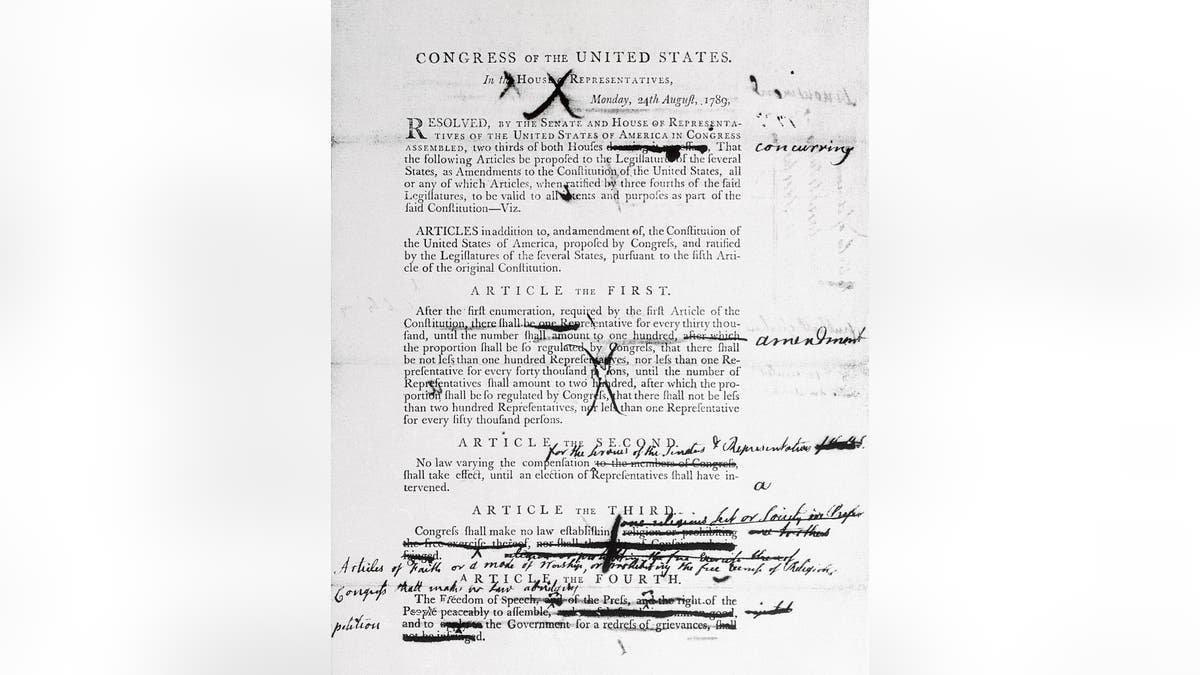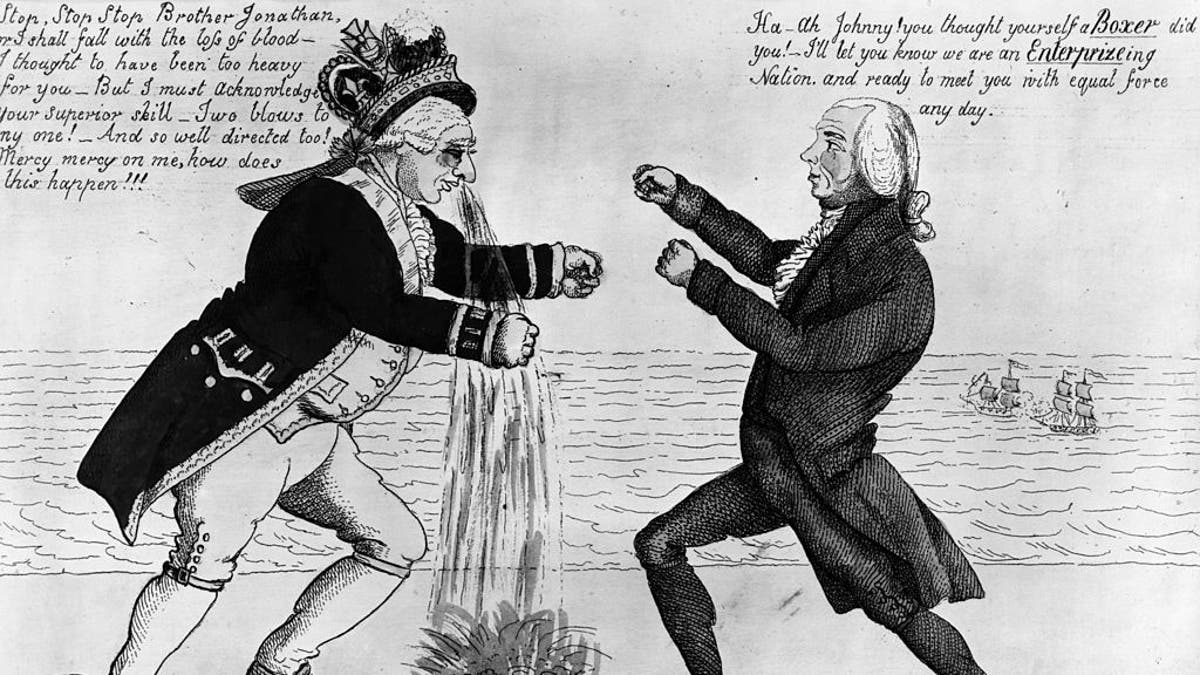On this day in history, December 15, 1791, Bill of Rights ratified, codifying unique freedoms in new nation
The first 10 amendments to the U.S. Constitution, collectively known as the Bill of Rights, were ratified following vigorous national debate on this day in history, Dec. 15, 1791.
Their passage came three-and-a-half years after the Constitution was enacted to become the framework of the national government on June 21, 1788.
“A clash erupted over ratification [of the Constitution], with the Anti-Federalists opposing the creation of a strong national government and rejecting ratification and the Federalists advocating a strong union and adoption of the Constitution,” writes the Free Speech Center at Middle Tennessee State University.
ON THIS DAY IN HISTORY, DECEMBER 14, 1977, ‘SATURDAY NIGHT FEVER’ DEBUTS, CAPTURING DISCO ERA IN AMERICA
The Bill of Rights was essentially a compromise between the competing factions and a win for the Anti-Federalists.
Patrick Henry, who famously declared “Give me liberty or give me death” at the Second Virginia Convention of 1775, was the leader of the movement.
“An outspoken Anti-Federalist, Henry opposed the ratification of the U.S. Constitution, which he felt put too much power in the hands of a national government,” reports History.com.
“His influence helped create the Bill of Rights, which guaranteed personal freedoms and set limits on the government’s constitutional power.”
CHRISTMAS TREES ARE JUST ONE PART OF THE ALLURE THAT A VERMONT FAMILY BRINGS TO NYC EACH DECEMBER
The amendments also enjoyed support from Thomas Jefferson and James Madison, among other Founding Fathers.
“A bill of rights is what the people are entitled to against every government on earth, general or particular, and what no just government should refuse, or rest on inference,” Jefferson wrote.
“A bill of rights is what the people are entitled to against every government on earth.” — Thomas Jefferson
The 10 amendments form the foundation of cherished American freedoms, many of them the first of their kind enumerated in world history — some still unique among global governance.
They have been widely copied and adopted by governments around the world in the many years since.
The Bill of Rights “spells out Americans’ rights in relation to their government. It guarantees civil rights and liberties to the individual — like freedom of speech, press and religion,” notes the National Archives.

“It sets rules for due process of law and reserves all powers not delegated to the Federal Government to the people or the States. And it specifies that ‘the enumeration in the Constitution, of certain rights, shall not be construed to deny or disparage others retained by the people.’”
Madison originally proposed the Bill of Rights in 1789, with 12 amendments.
But only amendments 3 through 12 were ratified by the requisite three-fourths of state legislatures.
So the third proposed amendment has gone down in history as the First Amendment.
AMID NEW GUN LAWS, HERE’S THE TRUE STORY BEHIND THE ‘RIGHT TO KEEP AND BEAR ARMS’
“Congress shall make no law respecting an establishment of religion, or prohibiting the free exercise thereof; or abridging the freedom of speech, or of the press; or the right of the people peaceably to assemble, and to petition the Government for a redress of grievances,” states the dramatic codification of human rights first idealized during the American Revolution.
The Second Amendment, the fourth among the proposed amendments, famously outlines the right “to keep and bear arms.”
“A well regulated Militia, being necessary to the security of a free State, the right of the people to keep and bear Arms, shall not be infringed,” it declares.

It is perhaps the most contentious of all the amendments in modern America and the subject of numerous attacks by constitutional opponents — many of whom blame the amendment for wider social ills.
The “right to keep and bear arms” was first codified more than a decade earlier in the Massachusetts Constitution, which was ratified by the commonwealth in 1780 while the American Revolution still raged in other colonies.
REPUBLICANS RAMP UP INVESTIGATION INTO TWITTER, FACEBOOK ON COLLUSION WITH BIDEN ADMIN TO CENSOR SPEECH
Madison argued for a vigorous armed citizenry as a bulwark against government overreach in Federalist No. 46 in 1788.
A national army of 25,000 to 30,000 men “would be opposed by a militia amounting to near half a million citizens with arms in their hands,” he wrote.
“The right of the people to keep and bear Arms, shall not be infringed.” — Second Amendment of the Bill of Rights
The Founding Fathers, and the individual states that ratified the Bill of Rights, saw the Second Amendment, and the others, as important bulwarks against the long human history of governments seeking ever-growing power and then abusing that power once obtained.
The Founders lived that world of abusive power firsthand, without the protective benefits of a Bill of Rights that they gave succeeding generations of Americans — and wider humanity.

“During the debates on the adoption of the U.S. Constitution, its opponents charged that the Constitution as drafted would open the way to tyranny by the central government,” writes the Library of Congress.
“Fresh in their minds was the memory of the British violation of civil rights before and during the Revolutionary War, so they demanded a ‘bill of rights’ that would spell out the immunities of individual citizens.”
The first two proposed amendments have witnessed different fates — one dumped into the dust bin of history, the other kept alive for more than 200 years before it was enacted.
“The first amendment, which concerned the number of constituents for each representative, was never ratified,” states the National Archives.
“Article 2 concerning ‘varying the compensation for the services of the Senators and Representatives,’ was finally ratified on May 7, 1992, as the 27th Amendment to the Constitution.”
No more amendments to the Constitution have been passed in the 30-plus years since.
For more Lifestyle articles, visit www.foxnews.com/lifestyle.
Read the full article here






